Going Dutch on a Moving Image Archiving Degree
posted August 17, 2010 1 Comment
![]()
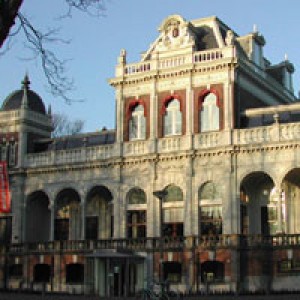
Apart from everything else – bike-friendly, crisscrossed with scenic canals, liberal beyond American dreams – it is home to world-class film collections and institutions that excel in restoration, research, and educational programs, and several of those have been involved in the University of Amsterdam’s archiving program since its inception in 2003.
The program, in its seventh year, boasts an impressive record of combining solid schooling in the skills of the trade with a firm grounding in film history and related subjects.
In Amsterdam’s master’s-degree program in the preservation and presentation of the moving image, which is taught in English, students spend their first year learning about the history and theory of media, and how audiovisual materials including film, video, and digital media have been archived in institutional contexts. In their second year, they put their lessons into practice during 10-to-14 week internships.
Several archives, film museums, festivals, distributors, and broadcasting companies host interns. Among them are the highly regarded Eye Film Institute Netherlands, which holds a world-class film collection and also excels in restoration, research, and educational programs. (Eye came into existence early in 2010 as an amalgamation of the Nederlands Filmmuseum, the Dutch Institute for Film Education, the Filmbank, and Holland Film.)
The master’s program also sends interns to a range of film festivals in the Netherlands and around Europe, as well as to institutions that provide an introduction to less-common forms of moving images, such as the Institute for the Unstable Media, and The Netherlands Institute for Media Art & Montevideo/Time Based Arts, an interdisciplinary center for art and media technology in Rotterdam.
Internship projects have included: the identification and description of nitrate film and digital restoration in the collection department of the Netherlands Film Museum; the development of a website for the online distribution of films for the International Film Festival Rotterdam; collaboration on the European BIRTH project on early television at the Institute for Sound and Vision; and the cataloguing and description of video works at Montevideo / Time Based Art.
http://www.youtube.com/watch?v=8cY9N1xPJkU&feature=related
From the inception of the master’s program, says its director, Julia Noordegraaf, “we worked with the big film archives in the Netherlands. They don’t just collaborate in terms of providing internships, but the senior staff of Eye, and Netherlands Institute for Sound and Vision, and Netherlands Institute for Media Art, all are involved in educating our students.”
Thomas Elsaesser, a film professor at the University of Amsterdam since 1990 who continues to teach in semi-retirement, founded the program, which is accredited by the Accreditation Organisation of the Netherlands and Flanders.
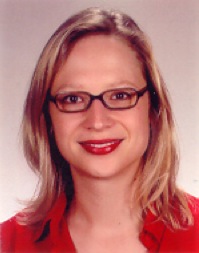
Each year, admission is restricted to 15 students, with 12 the norm. Each cohort takes all classes together, with no electives. Applications far outnumber places, and the qualifications of applicants are improving. Noordegraaf attributes that in part to better marketing that includes an updated website with interviews with students, details on career prospects, and the like. Also helping, she says, has been improved word-of-mouth advertising due to referrals by archivists and former students.
“The number of students who randomly pick our program is small,” says Noordegraaf, who is an assistant professor of media studies who also teaches film courses in the media and culture bachelor’s-degree program. “We think that’s because of the detailed information and specific nature of the program.”
From the program’s inception, staff have sought to draw students from overseas. The result is cohorts with students from not only the Netherlands, but also North America, Great Britain, all around Europe, and as far away as Australia.
Attracting applicants from the U.S. and England represents a coup, because both have high-profile moving-image-archiving programs of their own. The draw for American students is that the Amsterdam program, with a theoretical component as strong as its practical component, and an emphasis on exhibition and programming as well as preservation, differs enough from the programs at George Eastman House, New York University, and the University of California at Los Angeles.
Also cited by candidates for admission to the program is that Amsterdam, like NYU, emphasizes media arts, experimental film, and video art.
Beyond the Rocks
One of the great coups of Nederlands Filmmuseum came in 2004 when it recovered a silent-era treasure presumed lost, Beyond the Rocks, which Paramount made in 1922 with Gloria Swanson and Rudolph Valentino.

The institution made this short film about its restoration of the movie.
Internationalization was Thomas Elsaesser’s vision from the beginning of the program – one that suited the nature of moving-image archiving, Noordegraaf says. It also is a good fit with archiving in the Netherlands, a small nation with a small film industry but an eye on the world. For example, the renowned collections of the Netherlands Film Museum emphasize internationalism: While most countries collect their own national heritage, its collection includes a great deal of material from the U.S., the former Dutch colonies, and other nations, as well.
The Film Institute of the Netherlands is well-regarded for its film-archiving and –preservation efforts.
The decision to teach courses in English was an easy one to make, for a Dutch institution, Noordegraaf says. That has been a trend in the Netherlands, as throughout Europe and even the former Soviet Union.
As a result of each year’s placement of students in traineeships within several Dutch institutions, students leave the program with diverse professional contacts. (Some students, at least, also develop a wry take on the lingo of the film-studies world, judging by Deluzian [sic] Grandeur, a nine-minute film by recent graduates Dimitra Atsidis and Rob Byrne.)
Says Byrne, who graduated this year and is now back in the San Francisco area: “That was a huge benefit to me. I developed a whole set of contacts I can work with that I wouldn’t have had with an American program. That was not just because of other students, but also by going to festivals and presentations in Europe. I also attended the FIAF [International Federation of Film Archives] summer school in Bologna for three weeks, and had the opportunity to meet archivists from around the world who came to our program.”
Byrne went to the Amsterdam program after three decades in the computer-software world in Californian. But he had also long volunteered for the San Francisco Silent Film Festival – he is now vice-president of its board of directors – and other organizations.
In addition to all the attractions of the program, “frankly my wife was really interested in living in Amsterdam for a couple of years,” says Byrne.
Most American graduates remain in Europe, because employment opportunities are better, there. “The jobs situation is paradise, here,” says Noordegraaf – with one caveat.
On the plus side, the Dutch government has affirmed a commitment to preserving the nation’s visual heritage. “There is a very good and strong heritage-preservation climate in the Netherland,” Noordegraaf says. For example, the government has been engaged in a vast project to strengthen the economic infrastructure of the country, which it considers includes audio-visual preservation. The goal of the audio-visual component, which is called Images for the Future, has been to build digital, online access to the country’s audio-visual heritage, in recognition of the economic-development value of making holdings available to global educational and cultural markets as well as to commercial developers of such products as computer and Internet games.
And, increasingly, to individual users. Notes Noordegraaf: “The whole heritage industry has become so focused on the audience and audience participation.”
In fact, the European Union, as a whole, has embraced access to cultural heritage as a priority.
All of that digitalizing of holdings has meant, of course, lots of jobs for moving-image archivists and preservationists.
With that, students from the Amsterdam project have been snapped up, in recent years.
And the caveat? The subsidies won’t last forever. “We don’t know what things will be like in a few years’ time, when this money is gone,” says Noordegraaf.
Another source of uncertainty is what she calls the Netherlands’ “ambiguous relationship with its national film heritage.” She explains: “There are lots of classics, and people like those classics, but they always complain about the quality of the film industry.” Inevitably, in a country as small as Holland, film production is difficult.
Still, digitalization reigns, for now, with happy outcomes for researchers like Noordegraaf, and graduates like Byrne.
Noordegraaf is working on a book, Performing the Archive, in which she will discuss the impact of information science and digitization in moving-image archiving and film exhibition. As she says, it raises questions about the increasing importance of digital-file management and dissemination.
At times, she says, digitalization can seem so daunting an undertaking that it can threaten to overwhelm the whole endeavor of archiving. “My book is on how digitalization changes the status of the archives as knowledge keepers. There’s a Wikipedia effect: If you put everything on the Web and everyone can be an expert on the collections, then what does expertise mean?
“This is a big challenge we need to think of. I don’t think archives will lose their function, but perspectives on that function will change.”
Archivists will, for example, have to decide how to balance their attention to analog material – the bulk of what exists, now – with digital and born-digital material.
Her book’s title has a double meaning, she adds. On one hand, it signifies that working with archives is an evolving process – a performance that responds to evolving possibilities and challenges. On the other, it refers to the reality that archives must more and more perform in economic terms. She suggests: “Increasingly, archival performance will be measured in terms of access, accessibility, the use made of collections – the extent to which you reach out to the public.”
For that reason, the Amsterdam program includes media-art preservation among its emphases, she says. And that worked well for Rob Byrne. As he says, “digitalization is emerging more and more in restoration and now in the archiving world.” So, the computing expertise with which he entered the program served him well. Noordegraaf says the program’s instructors consider his thesis to be among the best in the program’s history. It was on the impact of digitalization on the exhibition of silent cinema.
– Peter Monaghan
Previous Post: NHPRC Project Archivist
Next Post: Detecting the History of Sound-on-Film


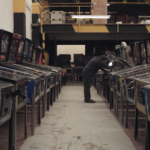
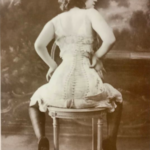
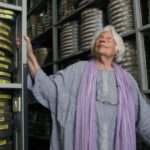
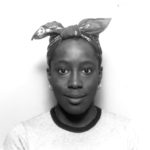
Comment (1)